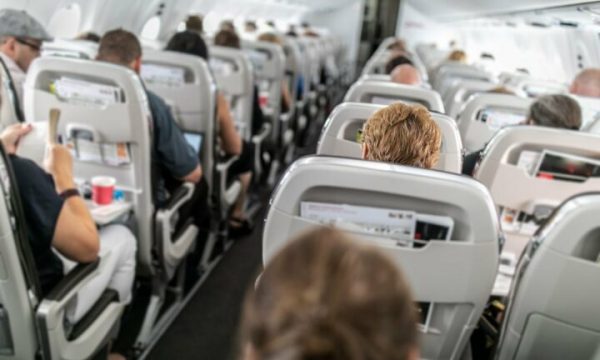Navigate air travel etiquette with expert tips on what not to do on a plane. From footwear protocol to turbulence myths, explore essential guidelines for a smooth and safe journey.
Introduction: Embarking on a journey through the skies can be an exhilarating experience, but navigating the intricacies of air travel etiquette requires finesse and insight. As novice and seasoned travelers alike take to the friendly skies, it's imperative to acquaint oneself with the unwritten rules of in-flight behavior. From footwear faux pas to turbulence myths, flight experts divulge indispensable advice to ensure a seamless and enjoyable journey for all passengers.
Maintaining Hygiene: The Importance of Footwear Protocol:
As travelers settle into their airborne abode, the temptation to shed one's shoes may arise. However, flight experts caution against this common faux pas, emphasizing the importance of footwear protocol. Venturing barefoot to the restroom poses hygienic risks, as cabin floors may harbor moisture and debris. To mitigate potential discomfort and maintain optimal hygiene, passengers are advised to keep their shoes on throughout the duration of the flight.
Seat Belt Safety: Respecting In-flight Protocol:
Amidst the anticipation of arrival, it's imperative for passengers to adhere to in-flight protocol regarding seat belt safety. Refraining from unbuckling prematurely and remaining seated until the aircraft reaches the gate is paramount. Flight experts underscore the potential hazards associated with premature seat belt removal, urging passengers to prioritize safety above convenience. By exercising patience and vigilance, travelers contribute to a secure and orderly cabin environment.
Dispelling Turbulence Myths: Understanding In-flight Dynamics:
Turbulence, though disconcerting, is a natural phenomenon inherent to air travel. Contrary to popular belief, turbulence poses minimal threat to aircraft integrity and passenger safety. Flight experts reassure travelers that modern aircraft are engineered to withstand even the most turbulent conditions, with pilots adeptly navigating atmospheric disturbances. By heeding crew instructions and fastening seat belts as directed, passengers can alleviate anxiety and cultivate confidence amidst fluctuating altitudes.
Overhead Compartment Considerations: Prioritizing Shared Space:
The overhead compartment serves as a communal repository for passengers' belongings, necessitating judicious use and consideration. Flight etiquette dictates refraining from monopolizing overhead space with an excessive number of bags, thereby accommodating fellow travelers' storage needs. By exercising restraint and mindfulness, passengers foster a harmonious cabin environment conducive to collective comfort and convenience.
Window Curtain Etiquette: Enhancing Awareness and Observation:
Unlocking a window to the world above, passengers wield a unique vantage point for observation and awareness. Flight experts advocate for the proactive engagement of window curtains, enabling passengers to marvel at panoramic vistas and assist in vigilance efforts. By keeping curtains open, travelers augment situational awareness and may alert crew members to potential irregularities, fostering a collaborative approach to in-flight safety and surveillance.
Conclusion:
As passengers embark on airborne odysseys, adherence to in-flight etiquette emerges as a cornerstone of responsible air travel. By embracing footwear protocol, respecting seat belt safety, dispelling turbulence myths, exercising overhead compartment considerations, and practicing window curtain etiquette, travelers contribute to a harmonious and secure cabin environment. Let us journey through the skies with courtesy and consideration, ensuring a memorable and enjoyable experience for all aboard.


Comments